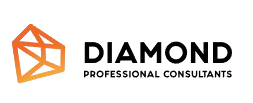Planning and budgeting are two of the most important processes that contribute to the success of any organization.
These processes help to define goals and develop plans to achieve them, make decisions that support the goals, and monitor performance and make necessary improvements.
Data analytics can be used to improve these processes by providing accurate and up-to-date information about the organization’s financial performance. This information can be used to identify areas that need improvement, and make decisions that support the improvements.
Benefits of Data Analytics
Data analytics can provide a number of benefits for planning and budgeting, including:
- Improved accuracy of plans: Data can be used to provide accurate information about the organization’s financial performance, which can help to improve the accuracy of plans.
- Better decision-making: Data can be used to analyze risks and opportunities facing the organization, which can help to make better decisions.
- Improved performance: Data can be used to monitor the organization’s financial performance, and make necessary improvements, which can help to improve performance.
- Detection of risks and opportunities: Data can be used to identify risks and opportunities facing the organization, which can help to make decisions that avoid risks and increase opportunities.
- Improved resource allocation: Data can be used to identify the resources that the organization needs to achieve its goals, which can help to improve resource allocation.
- Measurement of plan performance: Data can be used to measure the performance of plans, which can help to determine whether plans are on track, and whether any adjustments need to be made.
Types of Data that Can Be Used in Data Analytics for Planning and Budgeting.
There are a number of types of data that can be used in data analytics for planning and budgeting, including:
- Revenue data: This data is related to sales volume, sales prices, and sales costs.
- Expense data: This data is related to expense volume, expense types, and expense costs.
- Inventory data: This data is related to inventory quantity, inventory value, and inventory costs.
- Sales data: This data is related to customers, sales volume, sales value, and sales costs.
- Customer data: This data is related to customer behavior, customer needs, and customer expectations.
- Competitive data: This data is related to sales volume of competitors, competitor prices, and competitor costs.
- Data Analytics Techniques that Can Be Used in Planning and Budgeting.
There are a number of data analytics techniques that can be used in planning and budgeting, including:
- Statistical analysis: This is the analysis of data using different statistical techniques, such as variance analysis, regression analysis, and correlation analysis.
- Predictive analysis: This is the analysis of data using different predictive techniques, such as time series analysis, logistic regression analysis, and scenario analysis.
- Path analysis: This is the analysis of data using different path analysis techniques, such as cost-benefit analysis and economic feasibility analysis.
- Cost-benefit analysis: This is the analysis of data using different cost-benefit analysis techniques, such as cost-revenue analysis and cost-risk analysis.
- Data Analytics Tools that Can Be Used in Planning and Budgeting.
There are a number of data analytics tools that can be used in planning and budgeting, including:
Financial planning and budgeting (FP&A) systems.
Business intelligence (BI) systems.
Reporting and analytics systems.
-Financial planning and budgeting (FP&A) systems are some of the most important data analytics tools that can be used in planning and budgeting. FP&A systems are integrated systems that provide a suite of tools that can be used to collect, analyze, and report on financial data. FP&A systems can help to improve planning and budgeting by providing a comprehensive view of the organization’s financial performance.
-Business intelligence (BI) systems are data analytics tools that can be used to collect, analyze, and report on business data. BI systems can help to improve planning and budgeting by providing a comprehensive view of the organization’s business performance.
-Reporting and analytics systems are data analytics tools that can be used to collect, analyze, and report on data. Reporting and analytics systems can help to improve planning and budgeting by providing a comprehensive view of the organization’s performance.
Conclusion
Data analytics can be used to improve planning and budgeting by providing accurate and up-to-date information about the organization’s financial performance. This information can be used to identify areas that need improvement, and make decisions that support the improvements.





